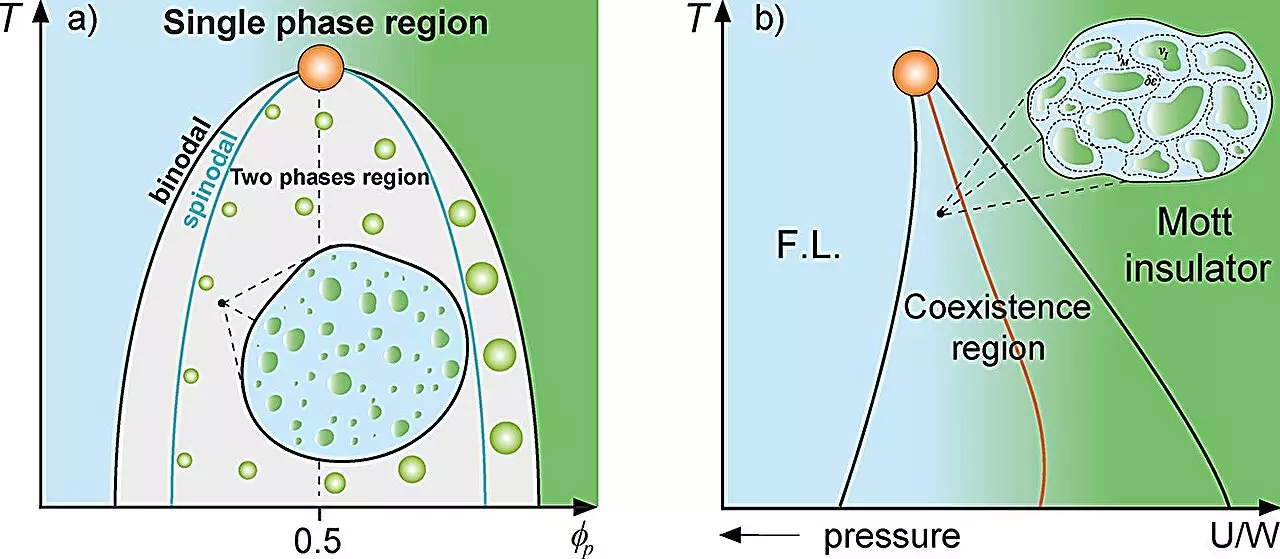The interaction of distinct substances is a core concept in classical mixture theory within physics, where systems are analyzed based on the constituents’ proportions and their interplay. In the biological sciences, particularly in cellular biology, analogous principles can be employed to explore how proteins organize themselves in cells. A recent study led by researchers at São Paulo State University (UNESP) expands on these ideas, investigating protein compartmentalization through a lens traditionally reserved for physical systems.
This study delves into the potential existence of a Griffiths-like phase within cellular structures, drawing parallels between behaviors observed in magnetic systems and those seen in biological contexts. Understanding such models is crucial as it provides insights into the complex dynamics of cellular environments, particularly during critical phases of biological processes such as cell division, differentiation, and response to external stimuli.
At the heart of this investigation lies the observation that proteins within a cell can undergo liquid-liquid phase separation, forming what are known as protein droplets. This phenomenon occurs when the concentration of proteins reaches specific thresholds, leading to distinct cellular compartments. The incorporation of thermodynamic parameters, such as those derived from the Grüneisen parameter and models like Flory-Huggins and Avramov-Casalini, allows for a deeper understanding of how these phases stabilize and interact.
The researchers uncovered that cellular dynamics significantly slow down near the binodal line—the critical threshold for phase separation. This insight suggests that the cellular Griffiths-like phase might have profound implications not just for fundamental cellular behaviors but also for key processes like gene expression, which are tightly linked with the dynamics of protein interactions.
The study also tantalizingly connects these findings to the origin of life itself. The authors propose that the emergence of primordial organisms might be tied to the slow dynamics observed in coacervates—organic droplets crucial for the initial stages of life. This notion aligns with the early theories posited by biochemist Aleksandr Oparin, which suggested that life’s inception could be tied to the stability of such dynamic structures. In essence, the Griffiths-like cellular phase could reveal not only how cellular processes function but also how they may have originated.
Chirality further enriches this dialogue. It describes the property of molecules that makes them non-superimposable on their mirror images—a concept with significant implications in biology. Homochirality, the dominance of one chiral form, is vital for the molecular symmetry inherent in life. The linkage between chirality, protein dynamics, and the proposed cellular phase adds layers of complexity to our understanding of life’s molecular foundations.
While the conceptual underpinnings of this research are grounded in physics, its applications to health and disease make it particularly impactful. The role of liquid-liquid phase separation in various disease processes, including cancer and neurodegenerative diseases, underscores its relevance. As the study notes, proteins implicated in tumorigenesis can condense into droplets that potentially alter their cellular functions, thereby affecting mutation rates and progression of the disease.
The discovery that this Griffiths-like cellular phase may either enhance or hinder pathogenic processes leads to critical implications for therapeutic interventions. For instance, the phenomenon of phase separation has been linked to the dynamics of the SARS-CoV-2 N protein during COVID-19, with implications for treatment strategies that can enhance the immune response. Furthermore, knowledge gleaned from the research could inform the development of therapies that exploit or mitigate phase separation’s effects, particularly in cancer treatment.
This innovative investigation, coauthored by a team of experts from diverse fields, highlights the necessity of interdisciplinary approaches in scientific inquiry. By melding physics with cellular biology, researchers can devise more nuanced frameworks for studying biological processes. The collaboration not only enriches the analysis but also fosters a comprehensive understanding of complex systems that single-discipline studies may overlook.
The study of Griffiths-like cellular phases illustrates how principles from physics can be instrumental in elucidating the intricacies of biological systems. By probing deeper into the dynamics of protein interactions and their implications for life and disease, researchers lay the groundwork for future advancements in our understanding of life’s molecular underpinnings and potential therapeutic avenues.

